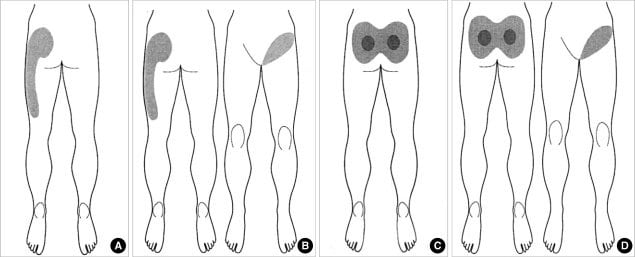Sacroiliac Joint Pain

The sacroiliac joint is the part of your lower back made up of the sacrum (the bony structure above your tailbone and below your lower vertebrae) and the top part of your pelvis. It is the part of the low back just behind your waist.
CAUSES
About 20% of patients with chronic low back pain below L5-S1 are suffering from sacroiliac joint pain. The most likely pathology of the SJP is sprain or rupture of the anterior sacroiliac ligament, and the possible causes for that are classified into four groups (traumatic, mechanical, hormonal, and inflammatory):
Traumatic:
- Activities that involve twisting, bending, or heavy lifting (for example, swinging a golf club or shoveling).
- A fall or a direct trauma to the area.
- Falling on the buttocks.
- Any injuries that causes the pelvis to rotate forward or slip upward.
Biomechanical:
- Imbalance of the muscles around the hip or pelvis
- Poor posture
- Ligaments in the sacroiliac joint that are too loose
- Sitting on hard surfaces like a bench or the floor for long period.
- Leg length discrepancy (one leg being shorter or longer than the other).
- Over pronation
- Twisted pelvis.
Hormonal Changes:
- Menstruation.
- Pregnancy (common).
- Lactation (breastfeeding).
- Rarely among women who go under HRT (Hormone Replacement Therapy).
Inflammatory Changes:
- AS: Ankylosing Spondylitis (most common)
- Reiter `s reactive arthritis
- Psoriatic arthritis
- Osteoarthritis
- Other forms of arthritis
SYMPTOMS:
- Pain in the sacroiliac area of the low back.
- Trouble bending or twisting your low back.
- Pain after sitting for a long time.
- Stiffness in the low back, hip, or leg.
- A feeling of being “out of alignment”.

DIAGNOSIS:
- Diagnosis is based on history and physical examination of the back, pelvis, hips and legs.
- X-ray, CT scan, and MRI might be needed to rule out other causes of pain.
- Some useful tests to examine sacroiliac joint are: a)Patric
k's Test (Fabere Sign), b) Gaenslens Test, c) Three – Phase Hyperextension Test
TREATMENT
- Rest from any activities, which cause pain.
- Warm compress if the surrounding muscles are tight (do not heat if an inflammatory condition is suspected).
- Stretching and therapeutic exercises
- Massage to the low back and sacroiliac joint
- Physical therapy/ Therapeutic Exercises
- Mobilization of the sacroiliac joint
- Shoe inserts
- Electrotherapy
- Sacroiliac back belt
- Osteopathy
- Chiropractic
- Steroid Injections
- Surgery
AT HOME TREATMENT
If you’ve been diagnosed or think you’re suffering from sacroiliac joint pain, follow the link below for some exercises that may help. If you are unsure if this is causing your pain, please reach out to us so we may be able to inform you before starting any exercises. If any of the exercises hurt too much, please stop them and let us know.
Other treatment which may work for you is to use heat, TENS, and move as much as you can tolerate. The worst thing that you can do is sit around or be on bed rest.


